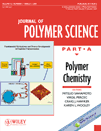Glow characterization in direct current plasma polymerization of trimethylsilane
Abstract
Plasma polymerization of trimethylsilane (TMS) was carried out in a direct current (dc) glow discharge and was investigated by optical photography and plasma diagnostic techniques including optical emission spectroscopy and residual gas analysis. The nature of the glow formed in TMS discharge, which deposited plasma polymers, was significantly different from that of a simple gas such as Ar. In an Ar discharge, the dominant glow was the well known negative glow, which developed at a distinctive distance from the cathode, whereas the cathode surface remained in the dark space. In strong contrast to this situation, in TMS dc discharge the dominant or primary glow was the cathode glow, which appeared at the cathode surface. At a similar location where the Ar negative glow appeared, a very feeble glow as a secondary glow was also observed in TMS glow discharge. The deposition results and plasma diagnosis data evidently indicated that in TMS glow discharge, the cathode glow resulted from the low-energy electron-impact dissociation of TMS molecules that creates polymerizable species, but the negative glow was related to nonpolymerizable species such as hydrogen atoms and molecules. In this article, the cathode glow formed in glow discharges of organic compounds was designated as the dissociation glow according to its underlying plasma reactions. © 2004 Wiley Periodicals, Inc. J Polym Sci Part A: Polym Chem 42: 1042–1052, 2004




